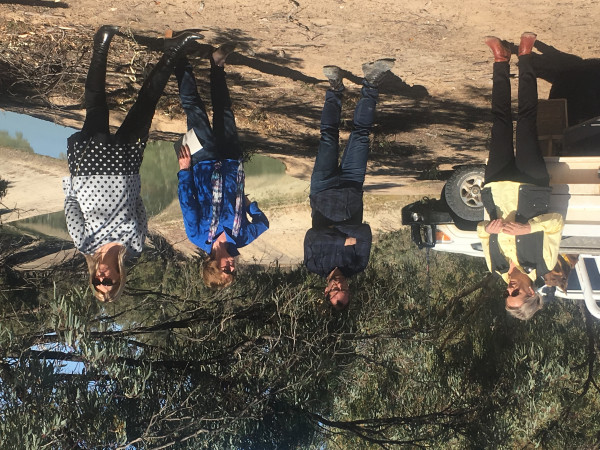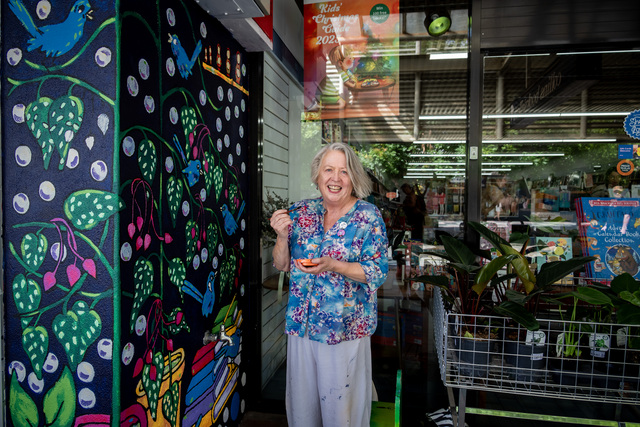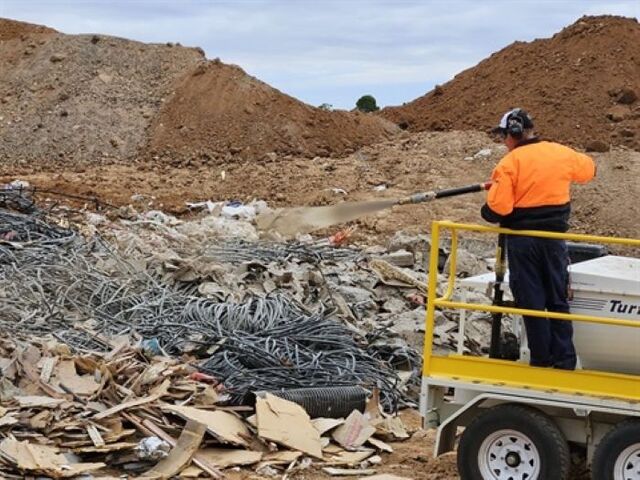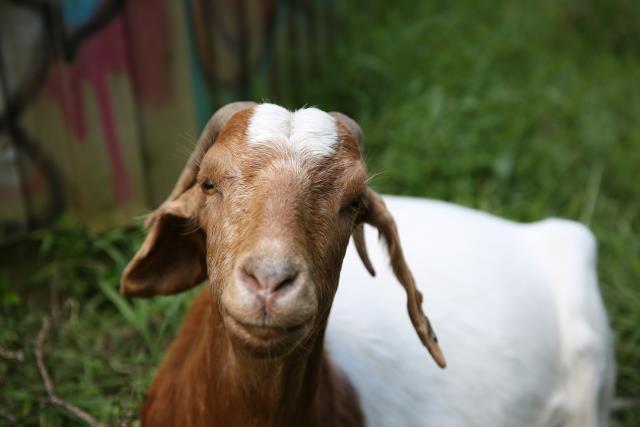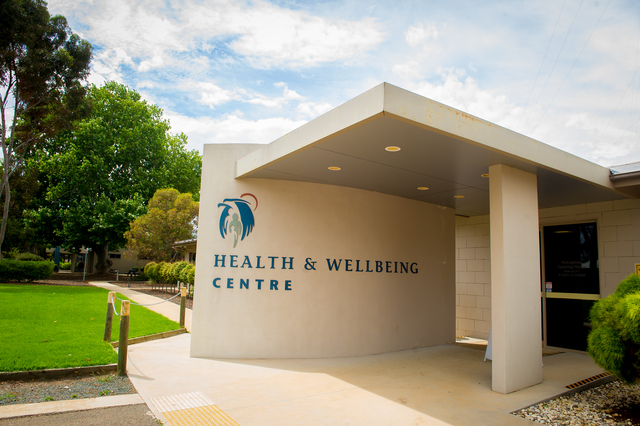WITH predictions of a dire summer ahead for the lower Darling River communities, Sunraysia Daily deputy editor Simon Cameron spoke with Member for Farrer and Environment Minister Sussan Ley about priorities — both immediate and long-term — for the region.
SC: Things are very tough along the lower Darling-Pooncarie area. Are you lobbying ministers and, as Environment Minister, do you feel like you need to be getting out there?
SL: Yes, I am and I’ve closely followed the circumstances, particularly of the Lower Darling Horticultural Group. Not just relating to their own family circumstances, which have from time to time been absolutely critical.
But also the environmental values of the lower Darling and the importance of our policy and state policy of maintaining those things.
It’s closely related, of course, to the Menindee SDL project.
It’s actually an area where environment and agriculture are on the same page and there’s every reason why we can get a really good result here. A win-win.
Lower Darling water buybacks set for November, says Ley
SC: We’re not going to get that result this summer, though. Clearly there’s going to be more fish kills, all the predictions are it’s going to be bad. What needs to be done now to help those people and indeed the environment?
SL: There are direct arrangements, discussions about that particular group, and I’ll leave it to those individuals to talk about what they are.
But obviously it is about securing the future of the lower Darling, for the community, for the environment and for the economic base.
But when you talk about fish kills, yes, I worry about fish kills.
I worry about a season that looks as bad as this one, and soon after being appointed Environment Minister I went to the northern basin — and have recently been back there actually — and stood at the weir at Bourke, where it’s probably close to 12 months since water flowed over that weir.
So it really does bring home to you how the dry north is affecting the south.
Work is being done by NSW and connecting the water-sharing plan in the north to the water-sharing plan in the south — coming to a sensible arrangement about A-class and floodplain licences — and that is a task that NSW is turning its hand to.
And getting the policy right for the lower Darling — we’ll do what we can when it comes to fish kills.
NSW is talking about interventionist measures, catching fish, breeding them, restoring them, returning them.
So really, direct environmental protection measures, which I think are totally appropriate if this gets any more serious when it comes to our fish and our river health.
SC: There’s also been calls for the need for more health care for people in that part of the world now, whether it be psychologists or around mental health. People there are really struggling. As the local member, is that something you can push for to ensure those people are going to have the services they are going to need come summer?
SL: I talk regularly to my primary health networks about the services that are available and there are services.
What I referred to before about feeling like the world is closing in and not wanting to leave your home in order to go to a town, perhaps not feeling comfortable about telephone services, even though I would encourage everyone that telephone services are of a very high standard — they work well because people don’t have to leave home to access them.
The community does need to look at all of its members and never be afraid to ask, ‘How are you doing?’
SC: I believe there is a meeting in Menindee in a couple of weeks about Toorale Station and the infrastructure around (the NSW Government) decommissioning that. How important is that, and is that overdue?
SL: It’s important for Toorale to provide options for the Darling that allow a flow in the lower Darling. That’s my very strong belief.
I’ve heard different points of view. I’m not an expert, but I have been informed that the regulator that’s there — or the changes that will be made — will actually allow that flexibility.
So, in a very high flood year, it might be appropriate for some of that water to go on the floodplain west of Toorale, which under natural conditions quite a lot of it did.
In a year like this, it’s far more appropriate for that water to make its way to Menindee.
SC: So in that context then, it is disappointing that when a flow did happen, it didn’t get there, surely?
SL: I don’t know whether the flow would have, or could have, I don’t know what all the factors at play were.
Having looked at it, you do see the natural floodplain to the west, so in keeping with the floodplains on the Barwon-Darling system, water does tend to leave the banks more readily than it does in a river like the Murray.
So good science and good modelling needs to inform these decisions.
But because our whole system is modified — as I said the physical infrastructure, the regulators — we can make them do different things. We can operate them with different rules and give ourselves the flexibility and options.
One thing this crisis has done — particularly the fish deaths on the lower Darling — it’s actually highlighted to all Australians the value of this natural system.
Before, I don’t think many people really understood it but now — it’s a good thing — we’ve got so many eyes on us here. I like that.
SC: Again, all the predictions are we’re in for a really bad summer — it might be worse than last year. Are eyes on the lower Darling for the wrong reasons, do you think?
SL: That’s a really good question because again we have people who don’t live in the basin coming to rapid conclusions about what needs to happen in the basin — which is a constant source of frustration for me.
Because it isn’t simple, and it’s not easily solved, and I still come back to my point that sometimes people who are not in the room think they’re smarter than the people who are in the room. And they are the people who live and breathe this every day.
They are the people who wake up every morning and look at a dying river, at a dust storm on the horizon, at a weather forecast that looks bleak.
So, for goodness sake, we just have to make sure we have their wisdom informing policy decisions.
I thought that the focus on the fish deaths was interesting because it looked at one aspect of the system and didn’t necessarily recognise there were lots of other things going on that didn’t relate to fish but related to the communities that depend on the water.
But, by the way, I’m an optimist and I see the dams fuller than they were predicted — Hume and Dartmouth and Burrinjuck — while the general-security users in the Murray don’t have an allocation, they may get one, and obviously while that doesn’t necessarily immediately affect the lower Darling, it’s a good sign for the southern connected basin as a whole.
SC: But when you’ve got Murray cod dying in winter, that’s not a good sign.
SL: It’s not a good sign, and my hope for the lower Darling is that the spring flush that comes down the Darling for cod breeding, which at the moment doesn’t work for citrus trees, can happen unimpeded because we will have a predominantly environmental lower Darling with the support of the horticulture growers there at the moment. That’s the win-win I’m talking about.

